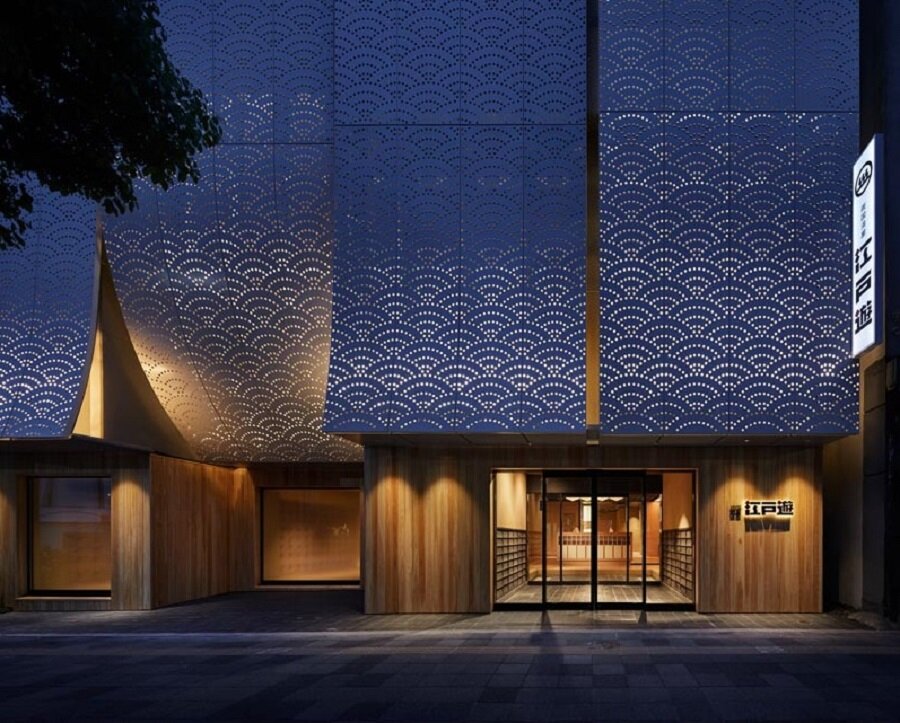#18327. Japanese Minimalism: Perforated Facade with Night Illumination

This modern architectural object is a magnificent example of combining Japanese aesthetics with innovative perforated facade design, which becomes the main expressive element of the building. The facade consists of perforated metal panels with a pattern resembling waves or scales, creating an effect of movement and depth. It's remarkable how the perception of the building changes with nightfall: during the day, it's likely a restrained metallic surface, but in the evening, it transforms as internal light penetrates through the perforations, creating a stunning play of light.
The building's lower level is made of warm wood, creating a pleasant contrast with the metal facade of the upper floors. This is not only an aesthetic approach but also a visual separation of functional zones. The entrance area is laconic, with large glass doors inviting visitors inside. The minimalist approach to organizing the ground floor emphasizes the Japanese character of the architecture, where simplicity and functionality play key roles.
Similar perforation techniques can be adapted for private housing: perforated metal panels or wooden screens can be used both for creating privacy and filtering light, providing an interesting play of shadows inside the space. Combining natural and industrial materials, as demonstrated in this example, is also an excellent solution for creating a balanced yet expressive architectural image.